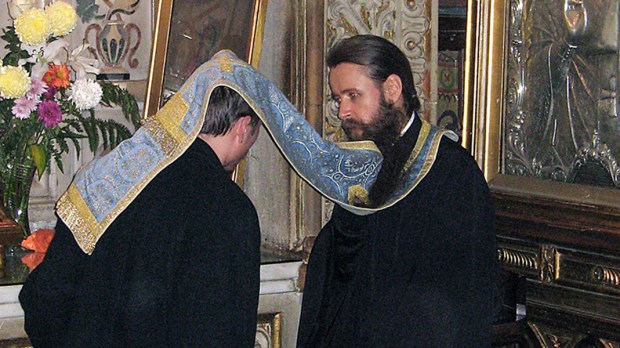The sacrament of confession has a long history in the Catholic Church and has been practiced in different ways throughout the centuries.
The Catechism of the Catholic Church offers a succinct history of the sacrament of confession, explaining how, “During the first centuries the reconciliation of Christians who had committed particularly grave sins after their Baptism (for example, idolatry, murder, or adultery) was tied to a very rigorous discipline, according to which penitents had to do public penance for their sins, often for years, before receiving reconciliation. To this ‘order of penitents’ (which concerned only certain grave sins), one was only rarely admitted and in certain regions only once in a lifetime” (CCC 1447).
Eventually a more private form of confession was adopted by both Eastern and Western churches, but some traces of this earlier tradition can be found in current Byzantine practices.
For example, while Roman Catholics are accustomed to confessing their sins to a priest in a separate room or box called a “confessional,” many Eastern Christians confess their sins in the front of the church, kneeling before a priest at the iconostasis.
This will also often include a lectern that has a Gospel book on it and a cross. The icon behind the priest will normally be an icon of Jesus Christ, emphasizing the reality that the penitent is confessing their sins to Jesus, and not the priest.
Furthermore, confession in the Byzantine tradition, sometimes called the “Holy Mystery of Repentance,” stresses the need to receive spiritual guidance from a “spiritual father.” The priest is seen more as a spiritual director, guiding the soul to virtue, often making the rite of confession a more lengthy affair. It’s less common to see the Roman “confessional line” in a Byzantine church, where penitents line up for a quick confession of sins. However, there are many variations among churches and this can happen on occasion.
At the conclusion of confession, the priest will lay the end of his stole on the top of the penitent’s head, saying the words of absolution. Below is one example of a prayer the priest might pray (the prayers will vary according to the particular Eastern Rite).
The Lord God through Nathan the Prophet forgave David his sin, and the adulteress weeping at his feet, and Peter shedding bitter tears for his betrayal, and the Publican and the Prodigal Son. May this same Lord and God through me a sinner, forgive you, N., all the sins of your life in this world and in the world to come. And may He make you stand uncondemned at his awesome tribunal for He is blessed for ever and ever. Amen.
Confession is also recommended most often during the seasons of fasting in the Byzantine calendar, though this is also common in the Roman Rite as well.
While there does exist some variations in the Catholic Church in how confession is performed, the essence remains the same. Sins are confessed and mercy is given through the hands of a priest, but ultimately by the power of God. It is God who forgives sins, using priests as instruments of mercy.

Read more:
Enjoy going to confession in private? Thank the Irish!

Read more:
Stressed out over confession? Maybe you’re over-complicating it

